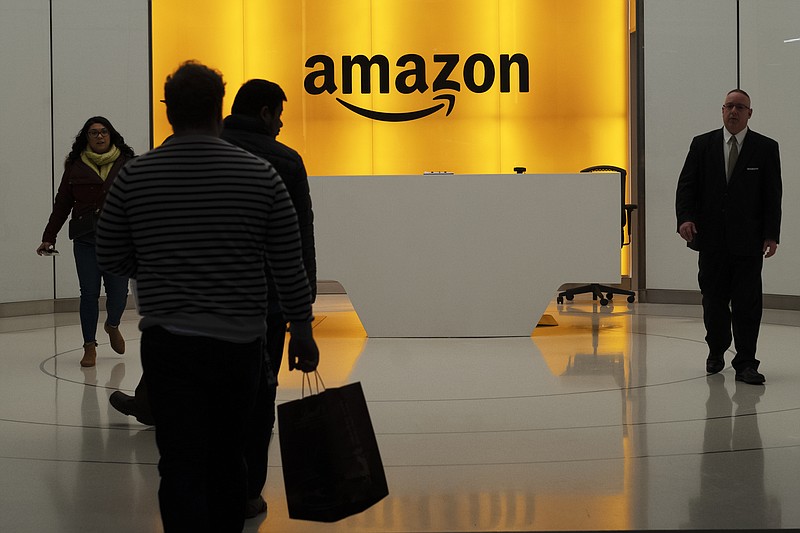SEATTLE - Amazon is back in the business of buying growth.
The company has been investing heavily to keep its giant core businesses growing at the expense of profits. For its retail business, that means spending to ship items to customers in just one day, an expensive proposition that the company said has already kicked up more sales.
"They are leaning in to shipping because that is a lever that has worked for them in the past," said Sucharita Kodali, an analyst at Forrester Research.
On Thursday, the company reported it had $70 billion in sales, up 24% over a year ago, and $2.1 billion in profit, down 27.6%. Amazon had more sales but made less profit than analysts expected. Its shares fell about 7% in after-hours trading.
For Amazon's cloud computing services, the company is spending to hire for sales and marketing, the types of work Jeff Bezos, the company's founder, long eschewed but has become necessary as the company looks to sign up bigger legacy businesses.
'Who needs Cheetos that fast?'
The number of individual products Amazon sells is a key measure of its retail business, and unit growth had slowed starting about two years ago. In April, Amazon announced it was moving to make one-day shipping the default for Prime members, a way to lift growth again.
Last quarter, Brian Olsavsky, the company's finance chief, said the fast-shipping let people consider Amazon for purchases they needed quickly. "It strengthens your need to not have to go elsewhere to buy a product," he said. He also noted that there were higher-than-expected costs for the deliveries, for things like storing the products closer to where customers live.
The one-day offering lets Amazon get a bigger piece of consumers' wallets on products typically bought at grocery stores or pharmacies. A typical order for items shipped in two days or more is $23.33, and Amazon spends $5.08 to fulfill and ship the items, according to a Morgan Stanley analysis. But for one-day shipping, the typical order is much smaller - $8.32. And Amazon spends even more - $10.59 - to fulfill and ship the order, meaning it loses money on many sales.
Kodali pointed out that Amazon said it would spend $800 million in the first-quarter of one-day shipping, and Amazon later said it would cost even more. "For what? Is that necessary? Who needs Cheetos that fast?" she said.
AWS is spending to reach larger customers
Amazon Web Services has been the leader in cloud computing, an approach to storing, computing and using data that the company pioneered. AWS grew with early, tech-forward adopters like Netflix and startups. Increasingly, Amazon is going after large corporations, which have far more complex processes to transform how they buy and use technology. This month, Amazon publicly celebrated as its own retail operations finally migrated off Oracle's databases, a not-so-subtle sign that large and complex organizations can operate on AWS.
But Amazon faces growing competition from Microsoft in particular, whose cloud products are catching up and benefit from the company's decades of experience specializing in selling to large companies.
Last quarter, AWS's profit margins were lower than investors expected, largely because of hiring sales and marketing staff. "We see great opportunity there to help customers engage with our services and migrate to our products," Olsavsky told investors last quarter.
Amazon's cloud business provides cash to fuel growth
The growth of AWS is key to all of Amazon in part because it is so much more profitable than the retail business. Even though AWS generates less than 15% of sales, it is the most valuable part of Amazon, according to analysts. The research firm Morningstar wrote last month that AWS was worth $550 billion. "This would make AWS the fourth-most valuable company in the world, trailing only Microsoft, Apple, and Alphabet, and ahead of other tech giants like Facebook and Alibaba," the research note said.
And Amazon has expanded the more profitable parts of its retail business. A growing share of sales on Amazon.com are from products sold by third-party sellers, a business that is profitable because Amazon gets a cut of each sale but does not have to take on the risk of buying and pricing products.
Amazon's "Other" business segment, which it says is largely ads, had more than $3 billion in sales in the last quarter. The ads are believed to be highly profitable, and give the company money to plow into other investments, like the one-day shipping.
